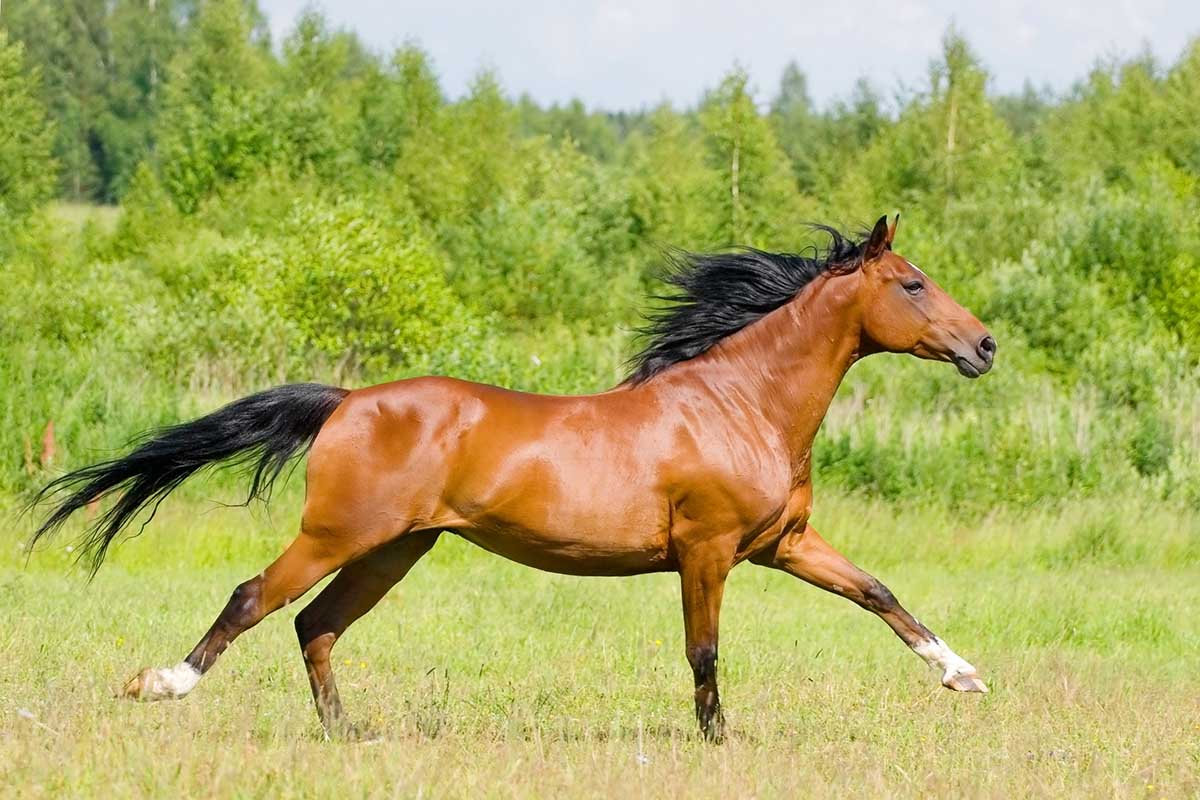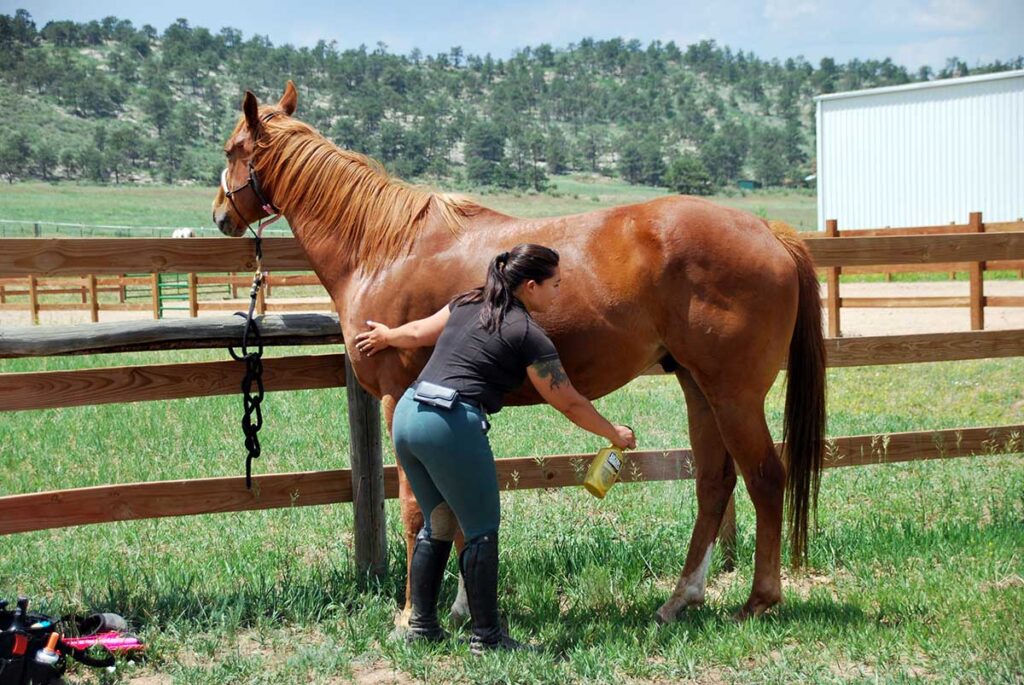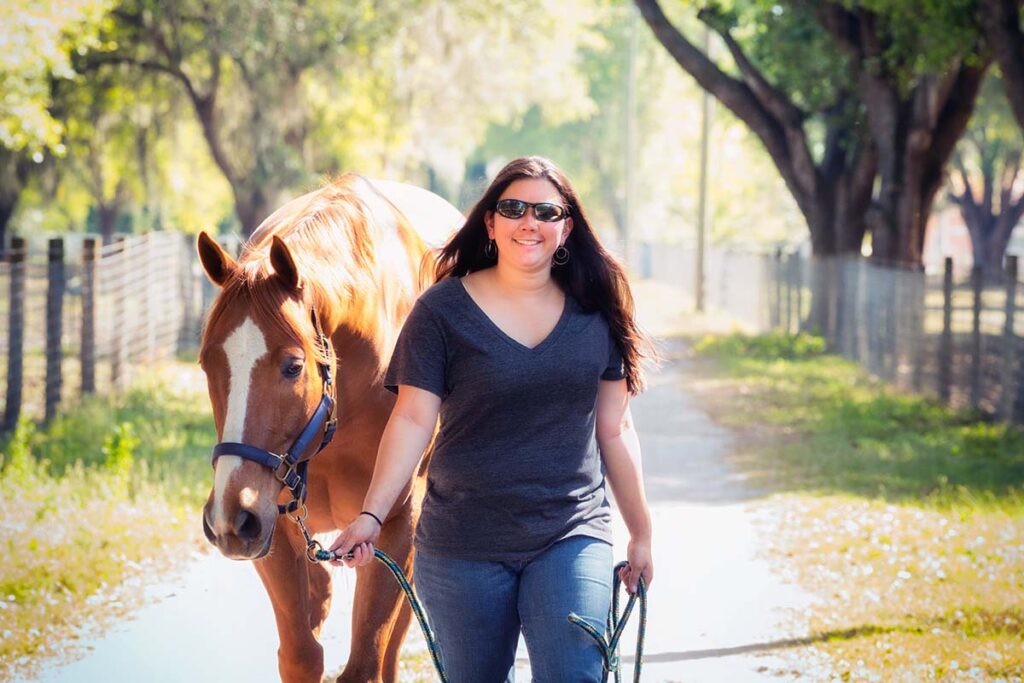Horses can gallop within hours of birth. They are literally born to be in motion! The equine species has evolved over the past 55 million years with a strong innate need for movement. As such, exercise plays an important role in virtually all aspects of their well-being, from digestion to muscle health. In natural settings—take feral or field-boarded horses, for example—movement occurs naturally around the clock as horses travel to seek forage and other resources. Wild horses can reportedly cover more than 35 miles per day! As the owner and guardian of a stabled horse, it becomes your responsibility to meet your equine partner’s vital need for regular exercise.
Exercise and Digestive Health
Your horse’s gastrointestinal (GI) tract is one of the easiest body systems to upset. Here’s what happens when a horse is cooped up: The process known as peristalsis—intestinal muscular contractions that digest and move food along the GI tract—gets disrupted, leaving your horse prone to ileus (gut immobility). This can, in turn, lead to impaction and gas colic.
Beyond disrupting digestion, lack of exercise can contribute to obesity. Obesity goes hand in hand with several other serious health issues for horses, including the hoof disease laminitis and endocrine conditions such as insulin resistance (IR) and equine metabolic syndrome (EMS).
Exercise and Musculoskeletal Fitness
Your horse’s entire musculoskeletal system is healthier with regular exercise. Physical activity increases bone strength and density in growing animals. And research suggests pasture turnout helps maintain that bone strength in adult horses. Movement is also known to increase blood and lymph circulation, helping keep the muscles, tendons, and ligaments healthy and reducing the chance of your horse “stocking up” (when his legs, particularly the hind, swell like tree trunks) and getting stiff. This is especially true if he’s dealing with arthritis.
Generally speaking, continuous, low-impact movement is preferable to bursts of intense exercise preceded and followed by stall confinement. Horses that can move prior to being ridden are less likely to be injured under saddle because their bodies are better warmed up. Movement can take many forms:
- Turnout in spaces ranging from small paddocks to vast pastures.
- Groundwork, which is training you do on the ground instead of in the saddle, including longeing, liberty or round pen work, and clicker training.
- Hand-grazing to get your horse out of his stall and moving while spending quality time together.
- Riding, either in the arena or on the trail.
- Hand- or tack-walking, a low-intensity form of exercise for horses that you can do from the ground or while riding.
- Walking the horse on a hot walker or a treadmill.
Some rehabilitation and physical conditioning facilities even offer water-based exercise for horses in the form of water treadmills and swimming pools. Exercising partially or fully submerged in water has the benefit of building fitness without overloading the joints.
Exercise and Mental Well-Being
If you’ve ever witnessed a horse performing a stereotypical behavior (sometimes called a “stable vice”) such as cribbing, windsucking, chewing wood, or pacing in the stall, the source was likely stress and/or boredom. Horses confined with restricted movement for extended periods can easily become bored or anxious. Insufficient forage is another major reason horses develop stereotypical behaviors.
Replicating the horse’s natural living conditions through movement, social contact, and free-choice forage helps mitigate these behaviors. They also help your horse stabilize his energy levels. With that in mind, always remember to treat your horse as an individual and consider his own preferences. Some horses are happier and less stressed in a quiet paddock with one friend compared to living in a large field with a herd full of energetic horses.
Take-Home Message
A horse on the move is usually healthier, happier, and sounder than a sedentary one. The benefits of regular exercise for horses are many, as a horse’s physical and mental well-being depend on adequate movement. You can get creative and have fun while providing opportunities for your horse to move. Hand-grazing, trail-riding, and liberty work on the ground are all wonderful ways to improve your bond with your equine partner while providing healthy exercise for his body and mind.
Lucile Vigouroux, MSc, holds a master’s degree in Equine Performance, Health, and Welfare from Nottingham Trent University (UK) and an equine veterinary assistant certification from AAEVT. She is a New-York-based freelance author with a passion for equine health and veterinary care. A Magnawave-certified practitioner, Lucile also runs a small equine PEMF therapy business.
Are you enjoying this content? Sign up for My New Horse’s FREE newsletter to get the latest horse owner info and fun facts delivered straight to your inbox!








